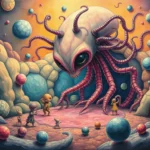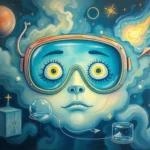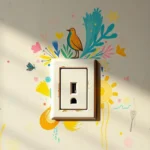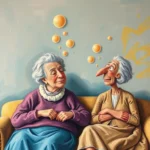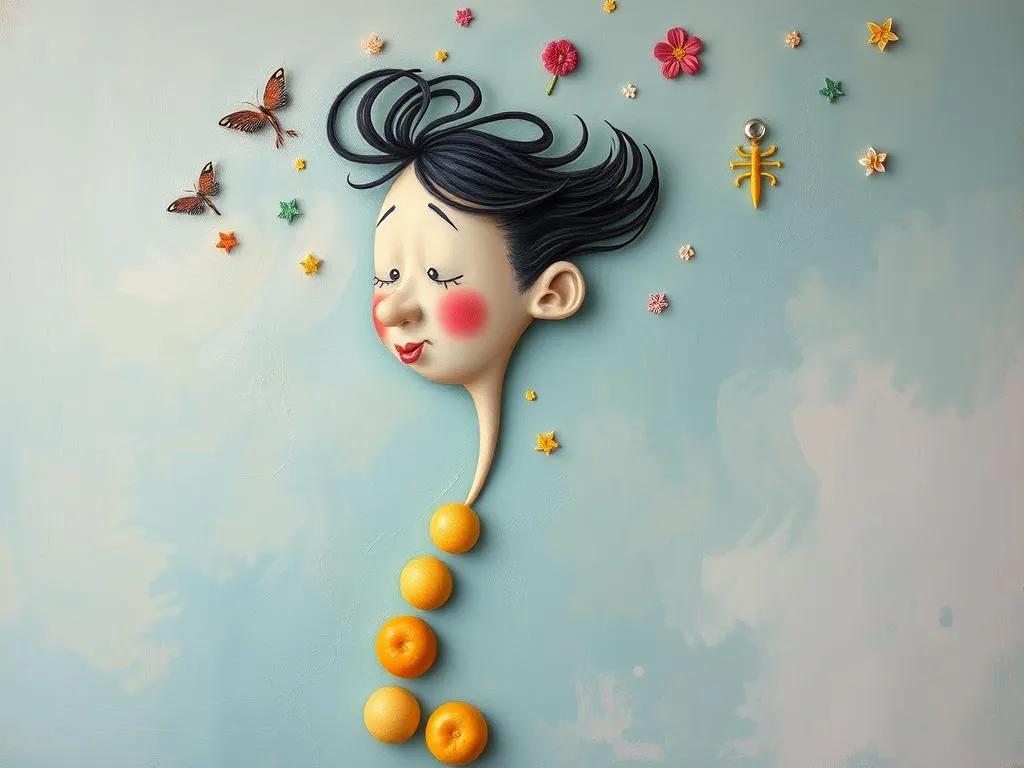
Have you ever woken from a dream where an object played the leading role instead of a familiar face? Maybe it was a hauntingly beautiful mirror, an ethereal tree, or even a vibrant-colored house. While they may not seem as significant as the people in our dreams, these non-living symbols are rich with meaning and can offer profound insights into our subconscious minds.
Dreams featuring inanimate objects can provide clues about our emotional state, our desires, and even our fears. They can serve as mirrors reflecting our lives, aspirations, or unresolved issues. In this article, we’ll explore the symbolism behind these dreams, present some relatable scenarios to illustrate their meanings, and offer practical advice for personal growth based on your dream experiences.
The Silent Messengers: Decoding Object Symbols
When interpreting dreams featuring non-living symbols, it is essential to consider the context in which these objects appear. Each item often carries its own unique energy and meaning, influenced by personal experiences and cultural backgrounds. Here are some common non-living dream symbols and what they might represent in your waking life:
-
Mirrors: Often seen as symbols of self-reflection, mirrors can indicate a desire to gain insight into your true self. They may reveal feelings of insecurity or prompt you to confront aspects of your identity that you’ve overlooked. If the mirror is cracked or distorted, it may symbolize a fractured self-image or unresolved issues.
-
Houses: Houses in dreams often represent the self and personal space. Different rooms may indicate various aspects of your psyche. For example, a cluttered attic could suggest repressed memories or neglected thoughts, while a beautiful garden might symbolize growth and potential.
-
Books: Books often signify knowledge and wisdom. Dreaming of a book could mean you are seeking answers or reflecting on lessons learned. A blank book might indicate untapped potential or a new chapter in your life waiting to be explored.
-
Trees: Trees frequently symbolize growth, stability, and life cycles. A strong, flourishing tree may reflect your personal development and resilience, while a barren tree could signify feelings of stagnation or loss.
-
Keys: Keys in dreams often represent access or unlocking potential. Dreaming of a key could suggest that you have the ability to open new opportunities in your life. Conversely, losing a key might indicate feelings of being stuck or locked out of your desires.
Each of these symbols has layers of meaning, influenced by personal experiences and cultural contexts. By exploring the significance of these non-living symbols, we can better understand the messages our subconscious is sending us.
Objects Speak: Stories from the Dream World
To illustrate how non-living symbols can manifest in dreams, let’s explore a few relatable scenarios. Each story reflects common experiences and offers insights into how these dreams might resonate with your own life.
Scenario 1: The Cracked Mirror
Imagine waking up after a dream where you gazed into a cracked mirror, your reflection distorted and fragmented. The mirror’s surface could represent your self-image—perhaps you are feeling insecure or struggling with confidence in your waking life. The cracks could symbolize unresolved trauma or past experiences that have left you feeling imperfect. This dream might encourage you to confront your self-perceptions and work towards self-acceptance.
Scenario 2: The Overgrown Garden
Picture a dream where you wander through an overgrown garden, filled with tangled vines and wildflowers. The garden is a symbol of your inner growth, but its chaos may reflect feelings of being overwhelmed by responsibilities or emotions. This dream invites you to tend to your garden—to cultivate what nourishes you and prune away what no longer serves you. It’s a reminder that growth often requires effort and attention.
Scenario 3: The Empty Book
In another dream, you find yourself holding an empty book that feels heavy in your hands. This book might symbolize untapped potential or a blank slate in your life. Perhaps you are at a crossroads, facing choices that could shape your future. The empty pages invite you to embrace new experiences—to write your own story and not be afraid of the unknown. This dream encourages you to explore your possibilities.
Scenario 4: The Locked Door
Imagine dreaming of a locked door that you desperately want to open. You search for keys but can’t find any. This dream may reflect feelings of being trapped in a situation or longing for new opportunities. The locked door represents your aspirations, and the search for keys signifies the effort needed to unlock them. This scenario reminds you that while new doors may be closed now, persistence and self-discovery can help you find the keys to your future.
Scenario 5: The Withered Tree
Finally, consider a dream where you encounter a withered tree standing alone in a barren landscape. This tree might symbolize feelings of stagnation or loss in your life. Perhaps you are grappling with a sense of disconnect or mourning something you have lost. This dream encourages you to acknowledge these feelings and seek ways to rejuvenate your spirit—whether through self-care, therapy, or reconnecting with loved ones.
The Journey Inward: Cultivating Personal Growth
Interpreting non-living dreams offers an opportunity for self-reflection and personal growth. While these symbols may seem disconnected from your daily experiences, they often hold the keys to understanding your emotional landscape. Here are some practical insights to help you navigate your journey:
-
Journaling: Keep a dream journal to track your dreams and their themes. Reflecting on these dreams can help you uncover patterns and gain clarity about your feelings and experiences.
-
Meditation: Spend time in meditation, focusing on the non-living symbols that appear in your dreams. Visualize these objects and ask yourself what they represent in your life. This practice can deepen your understanding of your subconscious motivations.
-
Artistic Expression: Consider expressing your dreams through art, whether it’s drawing, painting, or writing. This creative outlet can help you process your emotions and explore the meanings behind your dreams.
-
Seek Connections: Discuss your dreams with friends or a therapist. Sharing your experiences can provide fresh perspectives and insights that you might not have considered.
-
Embrace Change: Recognize that dreams often reflect transitions in your life. Embrace the changes they signify and be open to exploring new possibilities.
As you reflect on your non-living dreams, remember that they are not mere figments of your imagination—they are powerful messages from your unconscious mind. By engaging with these symbols, you can uncover aspects of yourself that may have been hidden or neglected.
In conclusion, the next time you find yourself dreaming of an object rather than a person, take a moment to pause and reflect. These non-living symbols are rich with meaning, offering you a glimpse into your inner world. They may inspire you to confront challenges, embrace growth, and unlock new paths in your life.
Consider this reflection: What might your dreams be urging you to discover about yourself? The answers may be just beneath the surface, waiting for you to explore.
